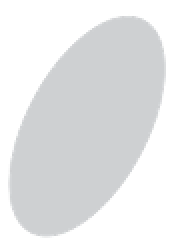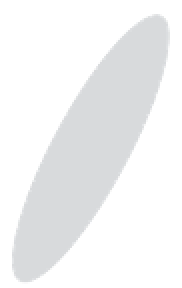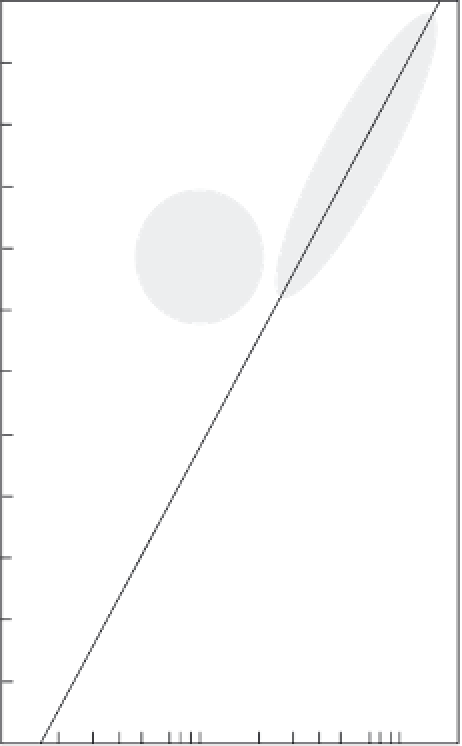Biomedical Engineering Reference
In-Depth Information
wing planform shapes, flapping-wing mecha-
nisms, high-lift aerodynamic devices, unsteady
aerodynamic effects, morphing wings, and sen-
sors for flight stabilization and navigation.
These can be grouped together under the broad
categories of airframes, performance enhance-
ment mechanisms, and sensors.
Wing loading, N/m
2
10
2
10
3
10
4
1
10
Airbus A380
10
6
Airplanes
10
5
Beech
Bonanza
10
4
5.3 PHYSICAL CHALLENGES AT
SMALL SCALES
Solar/ human
powered
10
3
10
2
Canada goose
In addition to the performance limits imposed
by the square-cube law, several other challenges
appear as the size of an aircraft is decreased.
These challenges are related to the behavior
of mechanical assemblies, energy storage in
batteries, miniaturization of electronics, and
aerodynamics.
10
1
Birds
10
0
10
-1
House wren
Hummingbird
Insects
10
-2
Dragonfly
5.3.1 Mechanical Assemblies
Structures typically become relatively stiffer
as their dimensions are reduced. For example,
the bending stiffness of a cantilever beam var-
ies inversely with the cube of its length. From
this point of view, miniaturization of structural
members does not result in increased deflec-
tions based on the applied loads. An excep-
tion is the deformation of wings and other
aerodynamic surfaces. Due to the requirement
for minimum thickness and minimum weight,
wings at the microscale typically consist of
membranes attached to a framework of stiffen-
ers. The major consequence of such a construc-
tion is the low torsional stiffness of the wing.
This can result in significant aeroelastic defor-
mations during operation. However, appropri-
ate deformation can be beneficial in terms of
creating a passive pitching motion that would
otherwise require a complicated set of hinges.
The aeroelastic couplings inherent in insect
and bird wings are believed to play an impor-
tant role in flight efficiency as well as stability.
These couplings are still poorly understood
10
-3
10
-4
Gnat
10
-5
2345 10
20
50
100 00
Cruise speed, m/s
FIGURE 5.1
The Great Flight Diagram. Adapted from
Tennekes
[7]
.
aircraft. However, as the dimension of man-
made microflyers is much smaller than the
smallest light aircraft, it becomes difficult to
extrapolate parameters based on conventional
aircraft. Natural flyers such as birds and insects
complement conventional aircraft by providing
a vast number of data points at the small scale.
Given the desired weight and dimension of
microflyers, it can be seen that they fall into a
region between large insects and small birds.
Therefore, a majority of researchers have turned
toward natural flyers for inspiration in develop-
ing microflyers. This inspiration includes a wide
variety of areas such as vehicle configuration,














